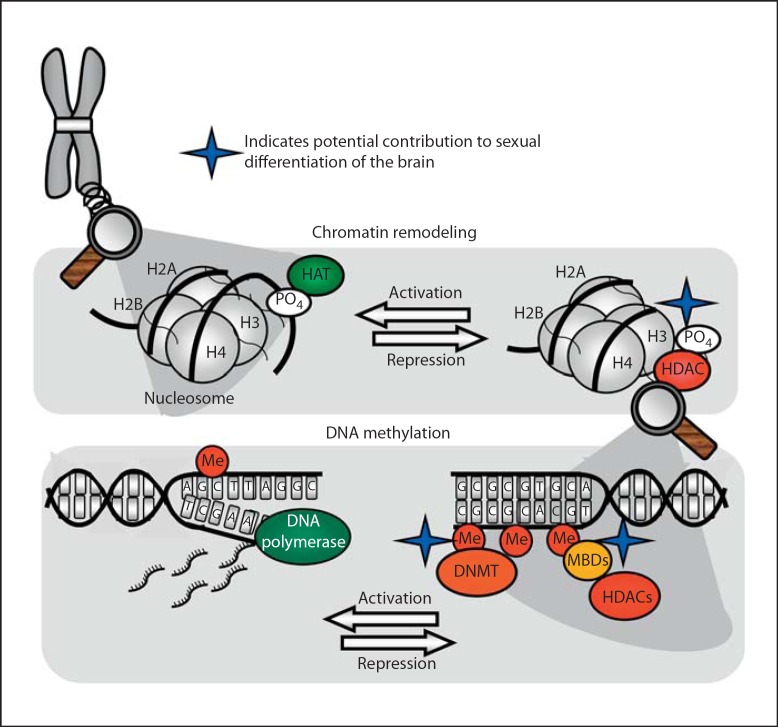Fig. 1.
Epigenetic control of gene expression. Chromosomes have complex higher order structures, the basic unit of which is called the nucleosome. Nucleosomes consist of segments of DNA wrapped around core histone proteins with protruding N-terminal tails. Histone acetyltransferase enzymes (HATs) acetylate histone protein tails, opening chromatin structure and activating transcription. Removal of acetyl groups by histone deacetylase enzymes (HDACs) results in chromatin condensing and transcriptional repression. Interference with HDAC activity can interfere with masculinization of the neonatal brain. Chromatin in a repressed state is usually highly methylated by DNA methyltransferase enzymes (DNMTs). Methylation at CpG dinucleotides attracts methyl-binding proteins (MBDs), which recruit chromatin remodeling proteins such as HDACs. Sex differences in DNA methylation and MBD expression in sexually dimorphic brain regions during the critical period suggest an involvement of DNA methylation in brain organization. Promoters with low levels of DNA methylation are typically associated with active transcription, but many empirical findings challenge this dogma.

